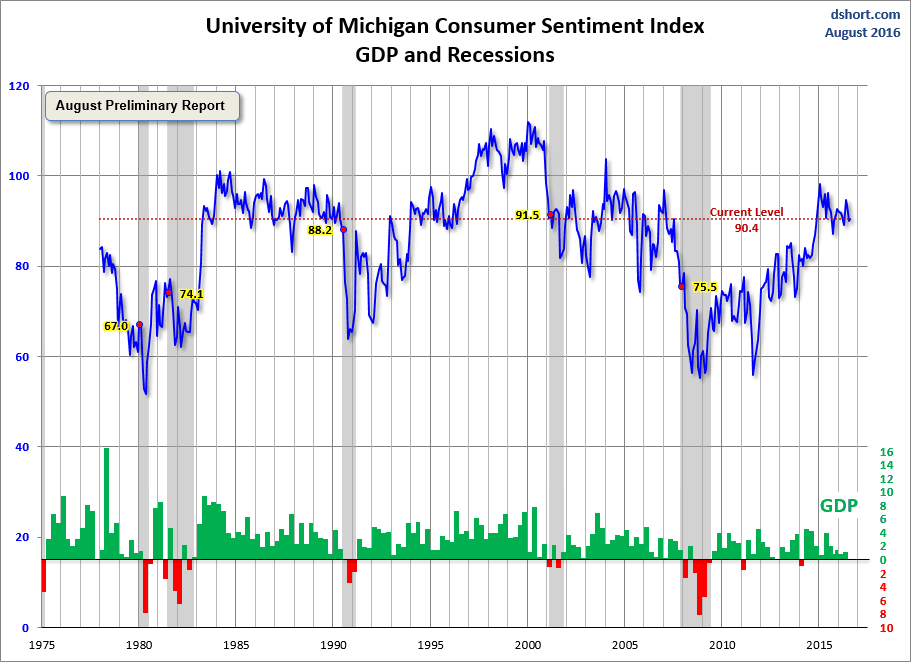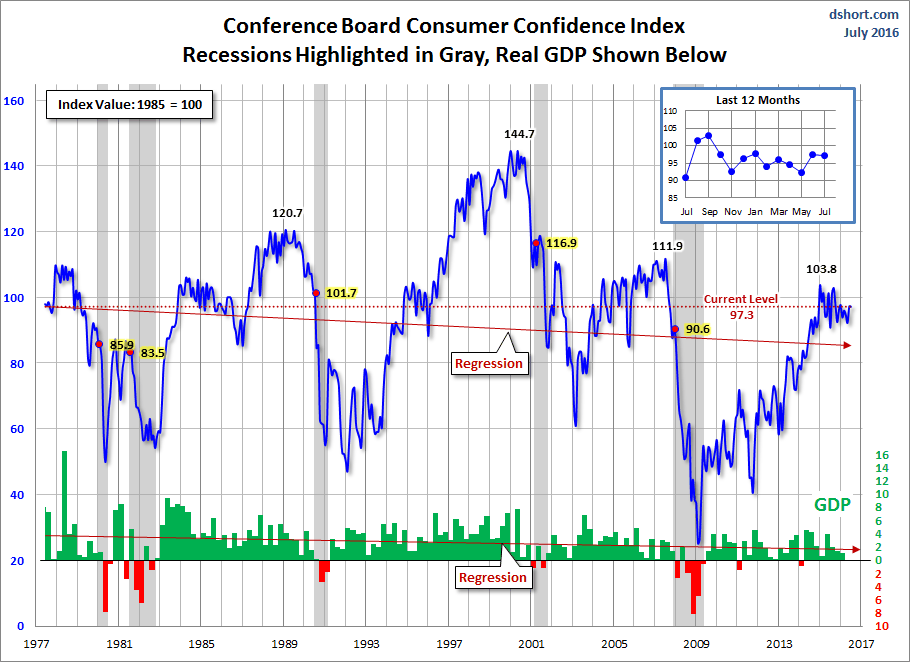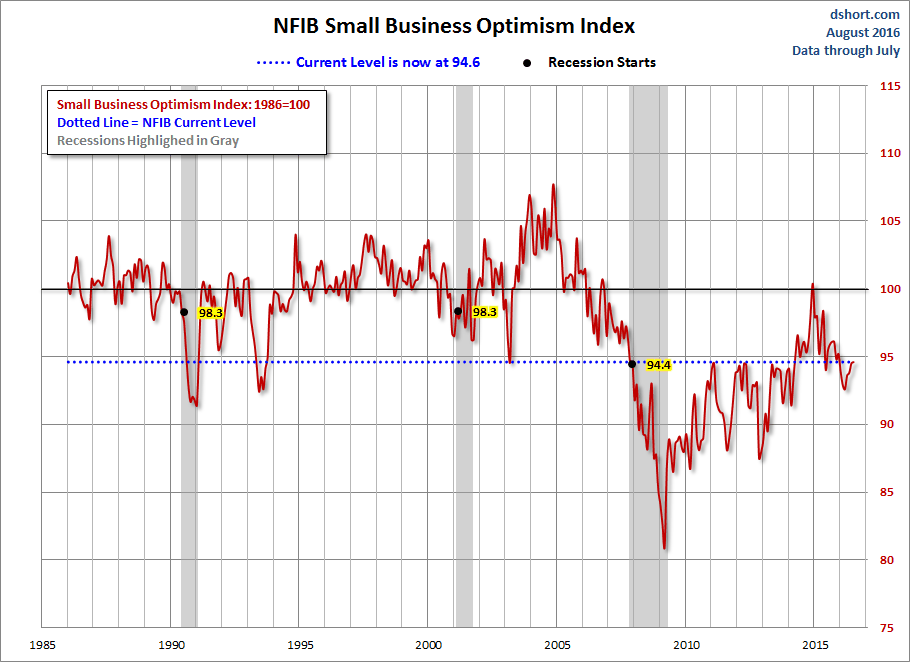by Doug Short, Advisor Perspectives/dshort.com
The University of Michigan preliminary Consumer Sentiment for June came in at 94.6, a bounce from the 90.7 May final reading but still below the interim high of 98.1 in January. Investing.com had forecast 91.5 for the June preliminary. The latest survey findings were a welcome improvement following last month’s interim low.
Surveys of Consumers chief economist, Richard Curtin makes the following comments:
Consumer confidence rebounded in early June, regaining its average level recorded since the start of the year. The June gain was due to the most favorable personal financial prospects since 2007, with households expecting the largest wage gains since 2008. Just as importantly, consumers expected the inflation rate to remain low over the foreseeable future. The expectation of rising interest rates has caused consumers to view current rates as attractively low, but it has not yet prompted the belief that it would be better to borrow-in-advance of future increases. [More…]
See the chart below for a long-term perspective on this widely watched indicator. Recessions and real GDP are included to help us evaluate the correlation between the Michigan Consumer Sentiment Index and the broader economy.
To put today’s report into the larger historical context since its beginning in 1978, consumer sentiment is now 11 percent above the average reading (arithmetic mean) and 12 percent above the geometric mean. The current index level is at the 77th percentile of the 450 monthly data points in this series.
The Michigan average since its inception is 85.2. During non-recessionary years the average is 87.5. The average during the five recessions is 69.3. So the latest sentiment number puts us 25.3 points above the average recession mindset and 7.1 points above the non-recession average.
Note that this indicator is somewhat volatile, with a 3.1 point absolute average monthly change. The latest data point was a 3.9 point change. For a visual sense of the volatility, here is a chart with the monthly data and a three-month moving average.

For the sake of comparison here is a chart of the Conference Board’s Consumer Confidence Index (monthly update here). The Conference Board Index is the more volatile of the two, but the broad pattern and general trends have been remarkably similar to the Michigan Index.
And finally, the prevailing mood of the Michigan survey is also similar to the mood of small business owners, as captured by the NFIB Business Optimism Index (monthly update here).
The general trend in the Michigan Sentiment Index since the Financial Crisis lows had been one of slow improvement. But the latest survey findings were a welcome bounce after last month’s interim low.
Caveats on the Use of University of Michigan Consumer Sentiment
This survey is quantitatively derived from a fairly complex questionnaire (sample here) via a monthly telephone survey. According to Bloomberg:
This release is frequently released early. It can come out as early as 9:55am EST. The official release time is 10:00. Base year 1966=100. A survey of consumer attitudes concerning both the present situation as well as expectations regarding economic conditions conducted by the University of Michigan. For the preliminary release approximately three hundred consumers are surveyed while five hundred are interviewed for the final figure. The level of consumer sentiment is related to the strength of consumer spending. Please note that this report is released twice per month. The first is a preliminary figure while the second is the final (revised) figure.
This is a survey, a quantification of opinion rather than facts and data. The question – does sentiment lead or truly correlate to any economic activity? Since 1990, there seems to be a loose general correlation to real household income growth.
Related Posts:
Old Analysis Blog | New Analysis Blog |
| Consumer Confidence | Consumer Confidence |
include(“/home/aleta/public_html/files/ad_openx.htm”); ?>












